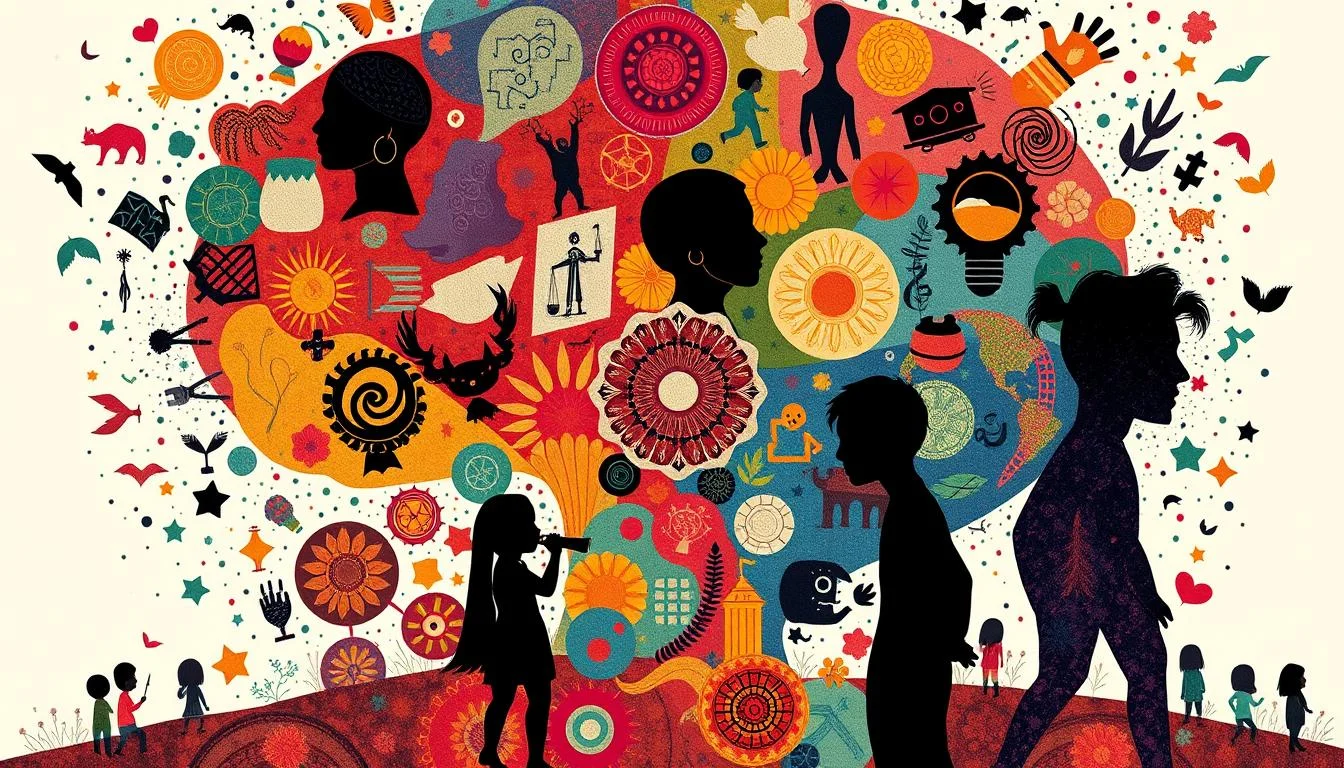Assimilasjon: Understanding the Process of Cultural Adaptation
The word assimilasjon—which translates to assimilation in English—captures one of the most fascinating and complex processes in human history. It refers to the way individuals or groups from different cultural, ethnic, or social backgrounds gradually adopt the customs, traditions, and values of another group. In most cases, this happens when people move to new places, interact with new communities, or become part of a broader society with dominant cultural norms.
While the term might sound simple, assimilasjon is anything but straightforward. It can bring about opportunity, growth, and unity, but it can also spark debate, tension, and questions about identity. To understand assimilasjon fully, it helps to look at its roots, its different forms, and its impacts on both individuals and societies.
The Basic Idea Behind Assimilasjon
At its core, assimilasjon is about blending in. When people arrive in a new cultural environment, they often begin to adapt in order to function smoothly within that society. This adaptation might be as small as learning the local language or as deep as adopting the community’s traditions, beliefs, and lifestyle.
For example, a family that immigrates to another country might start celebrating local holidays, speaking the dominant language at home, or cooking dishes that are popular in their new environment. Over time, their children may grow up identifying more with the new culture than the one their parents came from. That gradual shift is the essence of assimilasjon.
Historical Roots of Assimilasjon
Assimilasjon has always been part of human history. From ancient civilizations to modern states, people have moved across borders, formed new communities, and blended with other groups.
In ancient Rome, for instance, conquered peoples were often assimilated into Roman society by adopting Latin language, Roman laws, and Roman customs. In more recent history, waves of immigrants to countries like the United States or Norway often experienced pressure to assimilate into the dominant culture.
This historical perspective shows that assimilasjon is not new—it’s a recurring theme whenever diverse cultures come into contact.
Different Forms of Assimilasjon
Not all assimilation looks the same. In fact, it can take several forms, depending on the circumstances and the choices made by individuals or societies.
- Cultural assimilation: This is the most common form, where people adopt the traditions, language, and values of a new culture. An immigrant learning to speak Norwegian fluently and adapting to Norwegian customs is an example of cultural assimilasjon.
- Structural assimilation: This occurs when people become integrated into the social, economic, and political institutions of a society. For instance, when newcomers participate in local schools, workplaces, or government, they are structurally assimilating.
- Behavioral assimilation: This happens when people begin to adopt the everyday behaviors and habits of the dominant culture. From the way they dress to how they greet others, small actions reflect assimilation.
- Forced assimilation: Unlike the others, this form happens under pressure or coercion. Historically, many indigenous populations were forced to abandon their languages, religions, and ways of life in order to fit into a dominant culture. This type of assimilasjon is often criticized because it strips people of their identity and choice.
The Role of Language in Assimilasjon
Language is one of the most powerful tools of assimilasjon. Speaking the dominant language allows newcomers to connect with others, find jobs, and participate fully in society. It’s often the first step in adapting to a new culture.
But language assimilation can also raise challenges. When individuals stop speaking their native language, they risk losing a key part of their heritage. Many families struggle with the balance—teaching children the dominant language for success in school and work, while also preserving their original language at home.
This tension highlights one of the biggest themes of assimilasjon: the push and pull between blending in and holding onto one’s identity.
Positive Aspects of Assimilasjon
Assimilasjon can be a powerful and positive force when it happens naturally and with respect for all involved. Some of the benefits include:
- Social integration: Assimilation helps people feel like they belong in their new environment. This sense of belonging can reduce feelings of isolation and encourage stronger community ties.
- Economic opportunity: By adapting to the norms and skills of a new culture, individuals often find better job opportunities and pathways for success.
- Cultural exchange: Assimilation does not always mean losing one’s background. In many cases, it creates opportunities for sharing traditions, foods, music, and ideas across cultures, enriching everyone’s lives.
The Challenges and Criticisms of Assimilasjon
While there are positives, assimilasjon is not without controversy. Critics argue that assimilation often comes at the cost of cultural identity. When people are pressured to abandon their heritage in order to “fit in,” it creates inequality and tension.
Forced assimilation, especially, has left painful legacies around the world. Indigenous groups, for example, were often stripped of their languages and traditions in an attempt to make them conform to dominant cultures. The loss of identity caused by such policies is still felt today.
Even voluntary assimilation can be emotionally complex. People may feel torn between two identities—wanting to succeed in their new culture while also staying connected to their roots. This can lead to questions like: Am I losing myself? Am I betraying my heritage?
These challenges remind us that assimilasjon is not a one-size-fits-all process. Respect, inclusivity, and balance are essential.
Assimilasjon vs. Multiculturalism
It’s important to note that assimilasjon is not the only model for cultural adaptation. Many societies today embrace multiculturalism, which encourages people to maintain their cultural identities while participating fully in the broader community.
In a multicultural model, you don’t have to give up your traditions to be accepted—you can celebrate them alongside others. This approach values diversity as a strength rather than a barrier. Assimilasjon, on the other hand, leans more toward blending into one dominant culture.
Both models have their place, and often societies find themselves balancing the two. Some level of assimilation is usually necessary for communication and social function, but multiculturalism allows for greater respect for heritage.
Real-Life Examples of Assimilasjon
To make the concept more tangible, consider a few scenarios:
- A young student moves from Poland to Norway. At school, she quickly learns Norwegian, makes friends with local classmates, and celebrates Norwegian holidays. At the same time, she still eats Polish dishes at home and speaks Polish with her family. Over time, she feels both Norwegian and Polish—a balance of assimilation and heritage.
- A small town with a large immigrant population may see second-generation children fully assimilate into local culture. They may speak the dominant language better than their parents and adopt the local identity while still maintaining connections to their cultural background.
- On the other hand, history also shows us negative examples of forced assimilation, such as government programs that required indigenous children to attend boarding schools where they were forbidden to speak their native languages. These examples highlight why voluntary, respectful assimilation is healthier than forced change.
Finding Balance in Assimilasjon
The key to successful assimilasjon lies in balance. It’s possible to adapt to a new culture without erasing one’s own. Many people live with dual identities, finding pride in both their heritage and their adopted culture.
Societies can play a big role in this balance by creating inclusive environments that welcome diversity. Schools, workplaces, and communities that respect cultural differences while encouraging participation make assimilation less about losing and more about growing.
The Future of Assimilasjon
As the world becomes more interconnected through migration, travel, and digital communication, assimilasjon will continue to shape human experiences. The challenge will be finding ways to honor both integration and diversity.
Future generations may see assimilation not as a one-way process of blending into a dominant culture, but as a two-way street—where both newcomers and established communities adapt and grow together. This vision of assimilation emphasizes respect, exchange, and shared identity, making societies stronger and more vibrant.
Final Thoughts
The concept of assimilasjon is layered with complexity. On one hand, it enables individuals to thrive in new environments, find belonging, and contribute to society. On the other hand, it raises important questions about identity, heritage, and fairness.
When done voluntarily and respectfully, assimilasjon can be a beautiful process of growth and connection. But when forced or demanded, it risks erasing the very diversity that makes societies strong.
Ultimately, assimilasjon reminds us of our shared humanity—the way we adapt, learn, and grow when we come together. It’s not just about blending in, but about creating bridges between cultures, ensuring that history and heritage live on while we build a future together.






